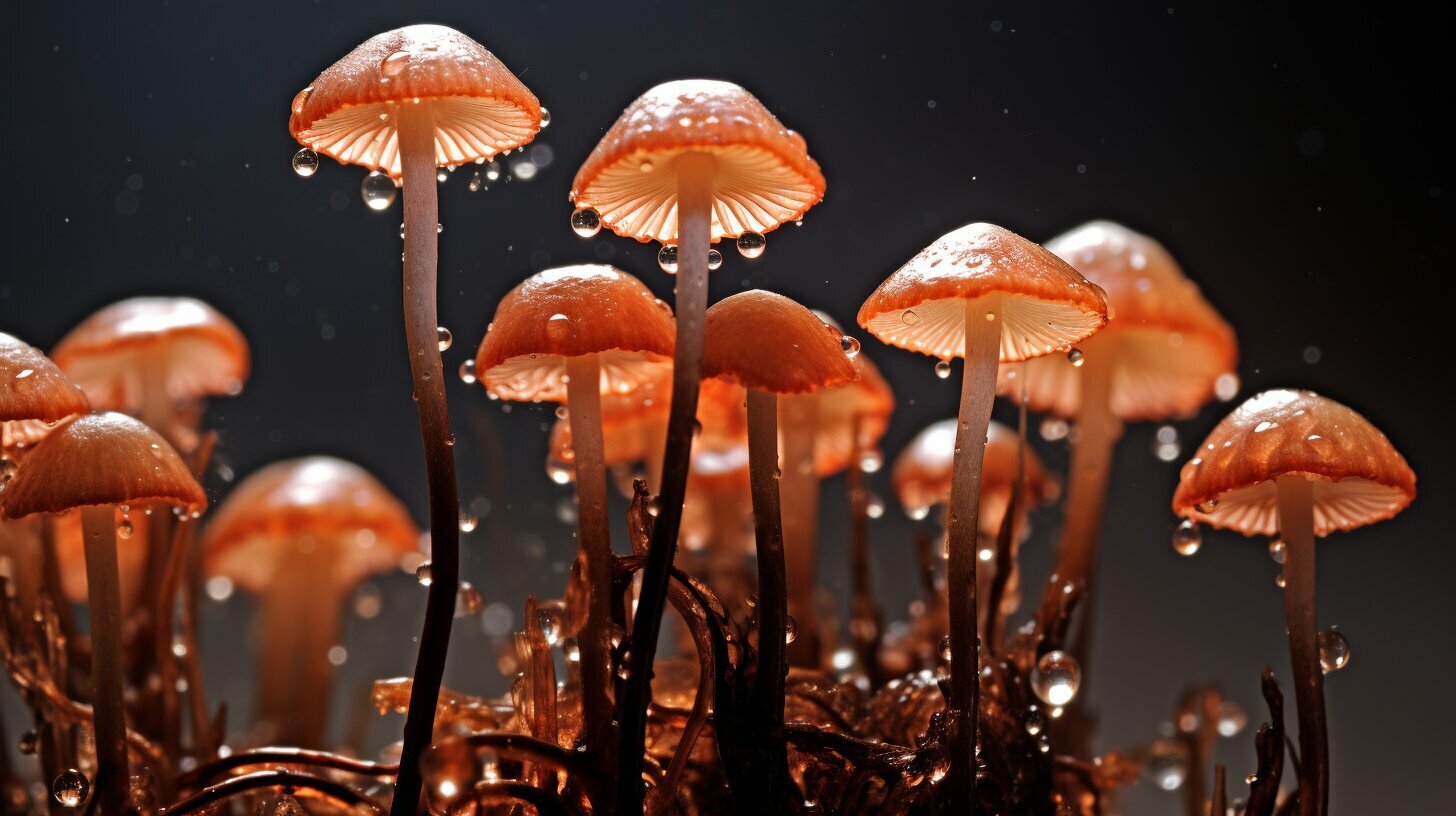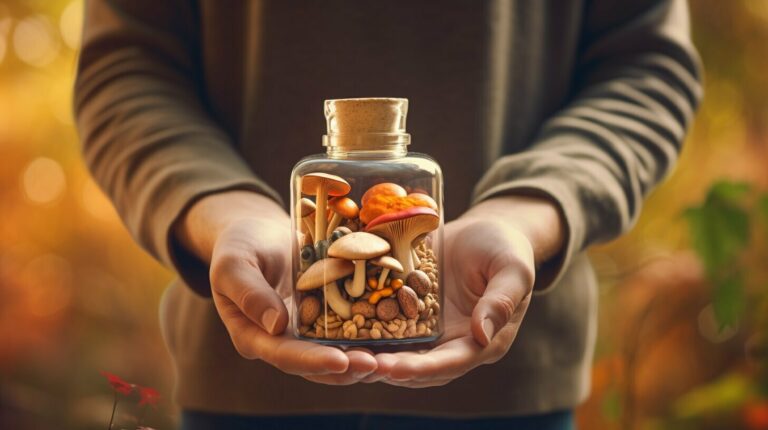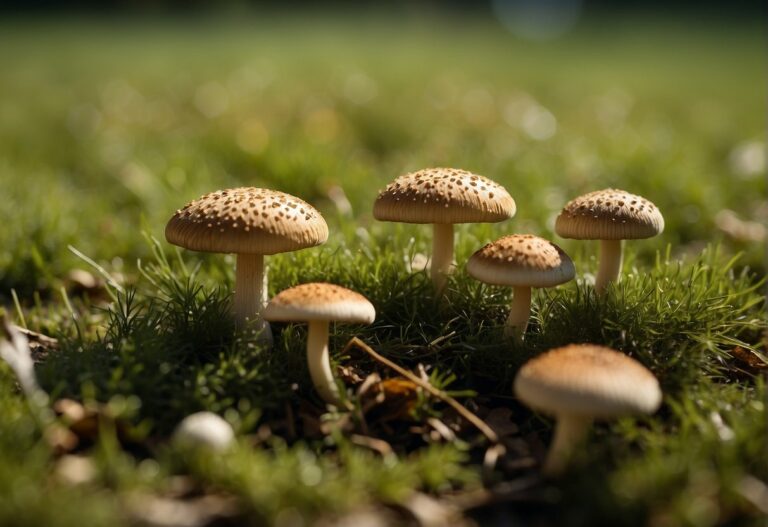If you’ve ever wondered whether you can eat the stem of a mushroom, you’re not alone. The stems of certain mushrooms are indeed edible and can be a delicious addition to your meals. However, not all mushroom stems are palatable, as some can be tough and woody. Let’s delve into this topic further and explore which mushroom stems are safe and enjoyable to eat.
- Some mushroom stems, such as those of king oysters, enoki mushrooms, cremini mushrooms, chanterelles, and morels, are edible and have a delightful taste.
- Mushroom stems can be used to enhance the flavor of soups, broths, and stocks, adding depth and richness to your culinary creations.
- Edible mushroom stems contain the same nutritional benefits as the caps, making them a valuable addition to a healthy diet.
- Not all mushroom stems are suitable for consumption, as some can be tough and unappetizing.
- It is essential to identify and avoid poisonous mushrooms, removing and discarding their stems to prevent any harmful effects.
Now that you have a better understanding of whether you can eat the stem of a mushroom, you can confidently incorporate this versatile ingredient into your cooking adventures. Just remember to enjoy the edible ones and stay away from the inedible or poisonous varieties. Happy mushroom culinary exploration!
Edible Mushroom Stems
Table of Contents
While not all mushroom stems are palatable, there are certain species that have stems as delicious as their caps. These varieties include king oysters, enoki mushrooms, cremini mushrooms, chanterelles, and morel mushrooms. These mushrooms have stems that are tender and flavorful, adding a unique taste and texture to dishes.
Mushroom stems can be used in a variety of culinary preparations. They can be chopped and added to soups, broths, and stocks, infusing the liquid with a rich and earthy mushroom flavor. The stems can also be sautéed or grilled alongside the caps, creating a tasty side dish or a flavorful addition to stir-fries and pasta dishes.
Not only do edible mushroom stems enhance the taste of dishes, but they also offer nutritional benefits. Mushroom stems contain the same nutrients as the caps, including vitamins, minerals, and antioxidants. They are a good source of fiber and protein, making them a healthy addition to your diet.
| Mushroom Variety | Taste | Preparation |
|---|---|---|
| King oyster | Meaty and savory | Sauté, grill, or roast |
| Enoki | Delicate and crunchy | Raw in salads or cooked in stir-fries |
| Cremini | Earthy and nutty | Sauté, roast, or use in sauces |
| Chanterelle | Rich and fruity | Sauté or use in risottos and sauces |
| Morel | Nutty and earthy | Sauté, roast, or use in creamy dishes |
It is worth noting that not all mushroom stems are edible. Some mushroom species have tough and woody stems that are not pleasant to eat. Additionally, there are poisonous mushrooms with stems that should never be consumed. It is important to be knowledgeable about mushroom identification and to only consume mushrooms from trusted sources.
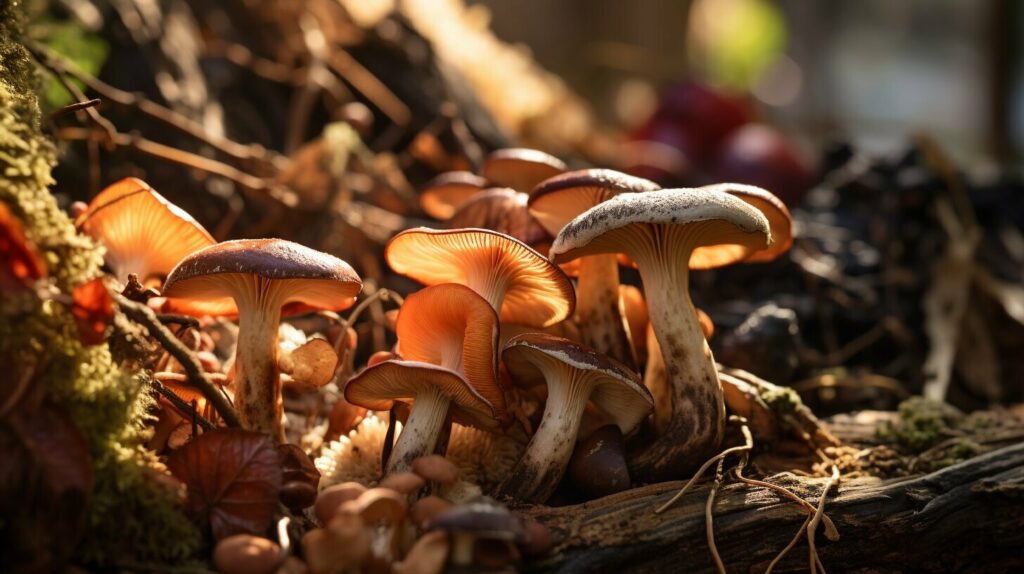
When it comes to shiitake mushrooms, it is essential to cook them before consuming. Raw shiitake mushrooms contain a toxic polysaccharide called lentinan, which can cause an allergic reaction if ingested. Cooking shiitake mushrooms neutralizes this compound, making them safe to eat. So, whether you are enjoying mushroom stems or caps, proper cooking and identification are key to a safe and delicious culinary experience.
Culinary Uses of Mushroom Stems
Mushroom stems are not just meant to be discarded – they can actually be quite versatile in the kitchen. While the caps often take center stage in mushroom recipes, the stems can add a depth of flavor and texture that shouldn’t be overlooked. Let’s explore some delicious culinary uses for mushroom stems.
One of the most common ways to use mushroom stems is in soups, broths, and stocks. The stems contain a rich umami flavor that can infuse your homemade soup with an earthy taste. Simply chop the stems into small pieces and add them to your broth or stock. They will simmer and release their flavor, enhancing the overall taste of the dish.
Another way to incorporate mushroom stems into your cooking is by finely mincing them and using them as a base for sauces and gravies. Their natural flavor profile complements a variety of dishes, from pasta sauces to meat gravies. By utilizing the stems, you can add depth and richness to your sauces without relying solely on the mushroom caps.
| Culinary Uses of Mushroom Stems: |
|---|
| Flavoring soups, broths, and stocks |
| Using them as a base for sauces and gravies |
| Adding them to stir-fries and sautés |
| Stuffing them with delicious fillings |
Mushroom stems can also be a wonderful addition to stir-fries and sautés. Their firm texture holds up well to high heat, and they can absorb the flavors of the other ingredients in the dish. Slice the stems thinly and toss them into your favorite stir-fry recipe for an extra burst of mushroom goodness.
Last but not least, don’t forget about stuffed mushroom stems! Hollow out the stems and stuff them with a delectable mixture of breadcrumbs, cheese, herbs, and spices. Bake them in the oven until the filling is golden and bubbling. This appetizer is sure to impress your guests and make good use of those mushroom stems.
So, the next time you’re cooking with mushrooms, don’t discard the stems. From adding depth to soups and sauces to being the star of stuffed mushrooms, mushroom stems have a wide range of culinary uses.
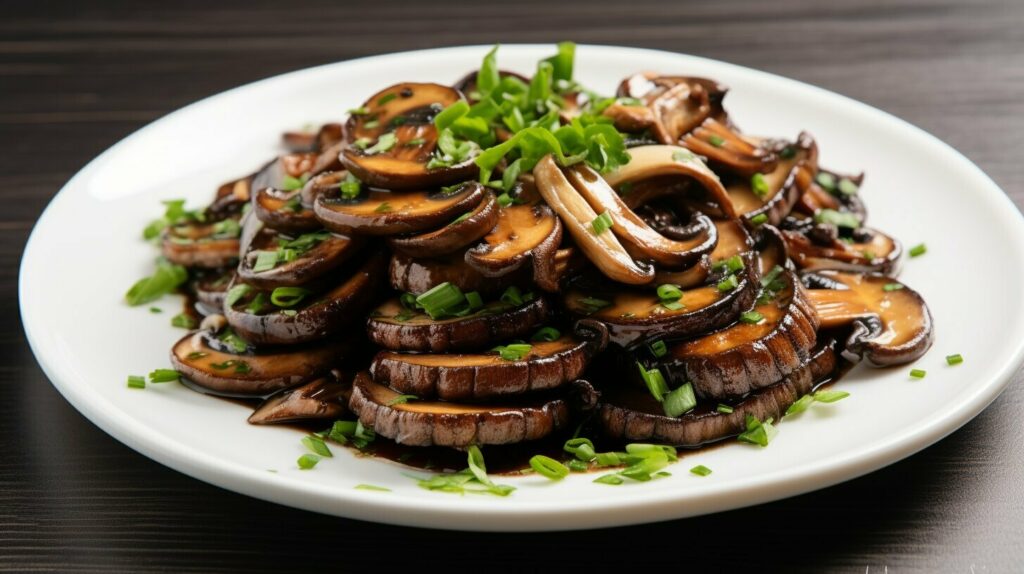
- Mushroom stems can be used to flavor soups, broths, and stocks.
- They can serve as a base for sauces and gravies.
- Mushroom stems are great in stir-fries and sautés.
- They can be stuffed with delicious fillings for appetizers.
Get creative with mushroom stems and elevate your dishes with their unique flavor and texture. Don’t let them go to waste!
Nutritional Benefits of Mushroom Stems
Not only do mushroom stems add flavor to your meals, but they also offer a range of nutritional benefits. Whether you’re enjoying king oysters, enoki mushrooms, cremini mushrooms, chanterelles, or morel mushrooms, including the stems in your cooking can provide a boost of essential nutrients.
Mushroom stems are rich in vitamins, minerals, and antioxidants. They are a good source of B vitamins, including riboflavin, niacin, and pantothenic acid, which play a key role in energy production and support a healthy metabolism. These vitamins are also important for maintaining healthy skin, eyes, and nervous system.
In addition, mushroom stems contain minerals like potassium, copper, and selenium. Potassium helps regulate blood pressure, while copper supports the production of red blood cells. Selenium acts as a powerful antioxidant, protecting cells from damage caused by free radicals.
To further emphasize the nutritional benefits of mushroom stems, it’s worth noting that they are also a good source of dietary fiber. Fiber aids digestion, promotes feelings of fullness, and helps maintain a healthy weight. Including mushroom stems in your meals can contribute to a well-rounded and nutritious diet.
Culinary inspiration:
If you’re wondering how to incorporate mushroom stems into your cooking, consider using them to flavor soups, broths, and stocks. Their earthy and umami-rich taste can enhance the depth and richness of these dishes. You can also chop them finely and sauté them with other vegetables or protein for an added burst of flavor.
So the next time you come across mushrooms with edible stems, don’t let them go to waste. Embrace their nutritional benefits and culinary potential, and explore the diverse flavors they have to offer.
| Key Nutrients in Mushroom Stems | Amount per 100g |
|---|---|
| Riboflavin (Vitamin B2) | 0.27mg |
| Niacin (Vitamin B3) | 3.8mg |
| Pantothenic Acid (Vitamin B5) | 1.49mg |
| Potassium | 318mg |
| Copper | 0.25mg |
| Selenium | 11.5mcg |
| Dietary Fiber | 2.5g |
Inedible Mushroom Stems
Though many mushroom stems are tasty and enjoyable, there are some varieties whose stems are best left uneaten. These inedible mushroom stems can be tough, woody, or fibrous, making them unpleasant to chew and digest. It’s important to know which mushrooms fall into this category to avoid any unpleasant culinary experiences.
One example of a mushroom with inedible stems is the shiitake mushroom. While the caps of these mushrooms are highly sought after for their rich, umami flavor, the stems can be tough and chewy. However, don’t let this discourage you from enjoying shiitake mushrooms! Simply remove the stems before cooking and focus on savoring the delicious caps.
Another variety with inedible stems is the oyster mushroom. While the caps of oyster mushrooms have a delicate texture and mild flavor, the stems can be stringy and fibrous. It’s best to trim off the tough stems and use only the tender caps in your culinary creations.
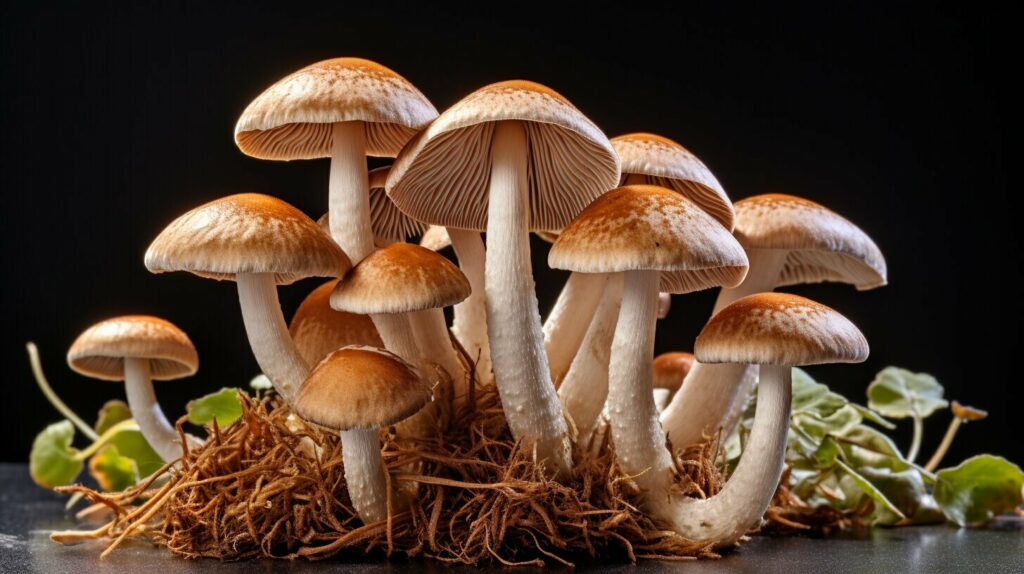
When it comes to foraging wild mushrooms, it’s crucial to be aware of those with inedible stems. Some toxic mushrooms have tough or poisonous stems that can lead to severe illness or even death if ingested. It’s always recommended to rely on experienced foragers or trusted sources when collecting wild mushrooms to ensure safety.
In summary, while many mushroom stems are delicious and add flavor to dishes, there are certain varieties whose stems are best avoided. Trim off the tough stems of mushrooms like shiitake and oyster, and stay cautious when foraging for wild mushrooms to avoid any potential health risks.
| Mushroom Variety | Stem Edibility |
|---|---|
| Shiitake | Inedible |
| Oyster | Inedible |
| Portobello | Edible |
| Maitake | Edible |
| Button | Edible |
Poisonous Mushroom Stems
It’s crucial to exercise caution when foraging for mushrooms, as certain species can have poisonous stems that can be harmful if consumed. Unlike edible mushroom stems that can enhance the flavor and nutritional value of a dish, poisonous mushroom stems can contain toxins that can cause severe illness or even be fatal. Therefore, it is essential to be able to identify and avoid these potentially dangerous mushrooms.
One example of a poisonous mushroom stem is the Amanita species, which includes the infamous Death Cap mushroom. The stem of the Death Cap is pale and can have a bulbous base, while the cap is smooth and olive-green in color. Ingesting this mushroom, particularly the stem, can lead to severe liver and kidney damage. It is important to remember that even a small amount can be toxic, so it is best to avoid consuming any unidentified mushrooms.
Another poisonous mushroom with harmful stems is the Destroying Angel. This mushroom has a smooth, white cap and a slender stem with a skirt-like ring. The toxins found in the stem and cap of the Destroying Angel can cause digestive issues, liver failure, and potentially be fatal if not treated promptly.
Common Poisonous Mushroom Stems:
| Mushroom | Stem Characteristics | Toxic Effects |
|---|---|---|
| Death Cap | Pale, bulbous base, smooth | Severe liver and kidney damage |
| Destroying Angel | Slender, skirt-like ring | Digestive issues, liver failure, potentially fatal |
When foraging for mushrooms, it is recommended to seek guidance from an experienced mycologist or join organized groups to ensure the safety and proper identification of mushrooms. This way, you can learn to distinguish between poisonous species and the delicious edible ones.
Remember, if you are unsure about the safety of a mushroom, it is always better to err on the side of caution and refrain from consuming it. The consequences of ingesting a toxic mushroom can be severe, and it’s simply not worth taking the risk. Enjoy the culinary delights of edible mushroom stems, but always prioritize your health and well-being when it comes to mushroom foraging.
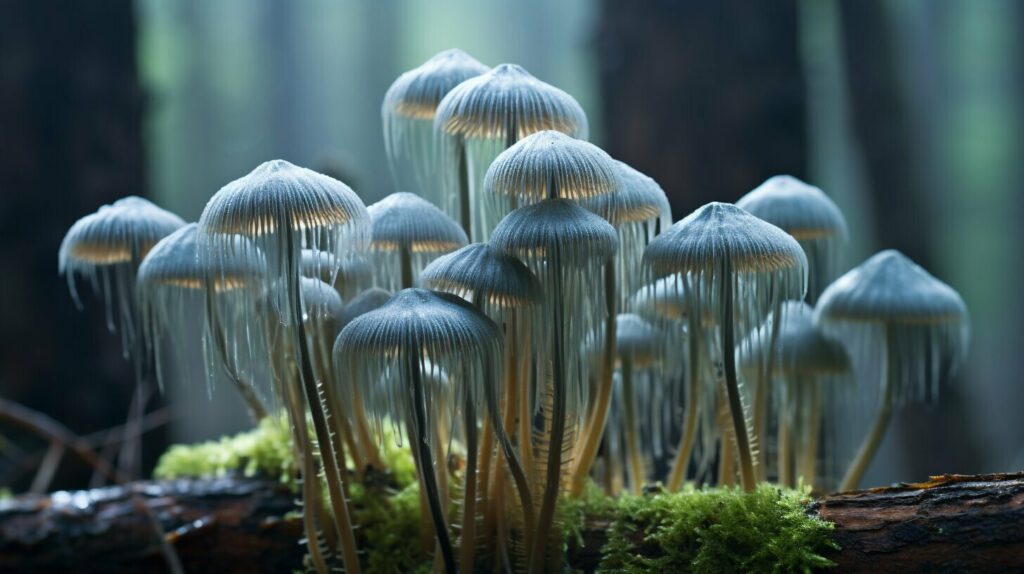
Shiitake mushrooms, a popular variety, require proper cooking before they can be safely enjoyed. When consumed raw, shiitake mushrooms can cause an allergic reaction due to a toxic polysaccharide present in their cells. To neutralize this substance and unlock their delicious flavors, it is important to cook shiitake mushrooms thoroughly.
There are several cooking techniques that can be employed to bring out the best in shiitake mushrooms. Sautéing them in a hot pan with a drizzle of olive oil or butter can enhance their earthy taste and impart a lovely caramelization. Adding shiitake mushrooms to stir-fries, soups, or stews can infuse the dishes with their rich umami flavor.
One popular method of cooking shiitake mushrooms is to simmer them in hot broth or stock. This not only imparts their unique taste to the liquid but also allows the stems to become tender and more palatable. The resulting broth can be used as a base for flavorful soups or savory sauces.
Cooking Shiitake Mushrooms: Quick Tips
- Cut off the tough stems of shiitake mushrooms before cooking. The caps are the most desirable part of the mushroom and often used in recipes.
- Slice the caps and stems to ensure even cooking and easy incorporation into dishes.
- Experiment with different seasonings and flavor combinations to enhance the taste of shiitake mushrooms.
- Remember that shiitake mushrooms have a strong flavor, so a little goes a long way. Start with a small amount and adjust according to taste.
- Store shiitake mushrooms in a paper bag in the refrigerator to maintain their freshness. Avoid storing them in plastic bags, as it can result in excess moisture and spoilage.
By following these cooking tips and techniques, you can safely enjoy the delightful flavors and health benefits of shiitake mushrooms in various culinary creations. Remember to always cook them thoroughly to avoid any potential allergic reactions and to savor their unique umami taste.
| Mushroom Variety | Edibility | Culinary Uses |
|---|---|---|
| King Oysters | Edible | Ideal for grilling, roasting, or sautéing due to their meaty texture. |
| Enoki | Edible | Great in stir-fries, soups, and salads. Adds a delicate and crunchy texture. |
| Cremini | Edible | Similar to button mushrooms but with a deeper flavor. Perfect for sauces, stews, and stuffing. |
| Chanterelles | Edible | Highly prized for their fruity and peppery flavor. Wonderful in sautés, risottos, or pasta dishes. |
| Morels | Edible | Coveted for their smoky and earthy taste. Excellent when pan-fried or added to creamy sauces. |
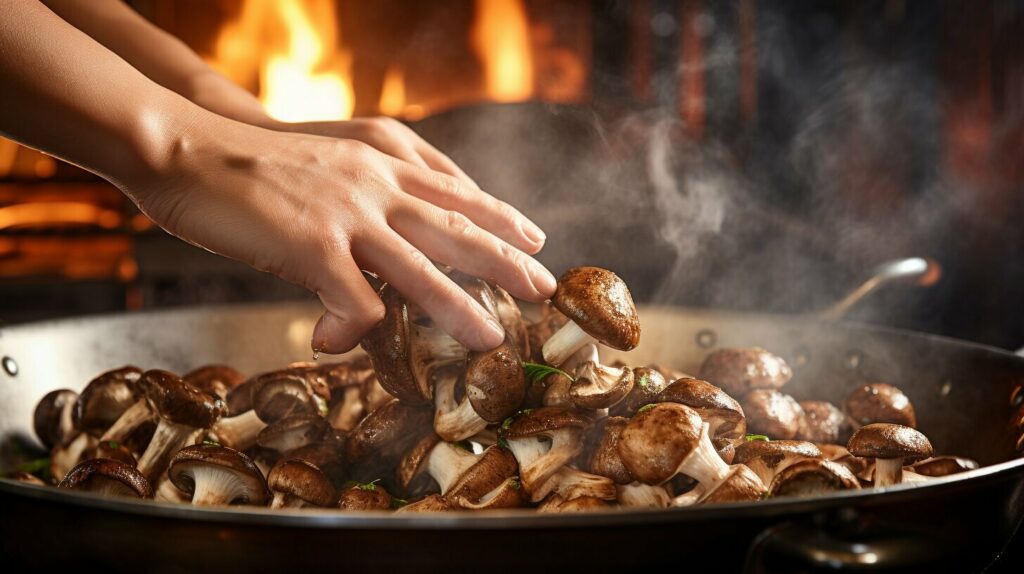
While mushrooms can be a delicious addition to your meals, it’s essential to be mindful of certain considerations to ensure a safe and enjoyable culinary experience. Here are some important factors to keep in mind when consuming mushrooms:
- Proper storage: Fresh mushrooms should be stored in a paper bag or a loosely covered container in the refrigerator. Avoid storing them in plastic bags as they can become slimy. Make sure to use them within a few days to maintain their quality and flavor.
- Cooking techniques: Cooking mushrooms thoroughly before consuming them is crucial. This helps break down the tough cell walls and enhances their flavor and digestibility. Whether you sauté, roast, grill, or bake them, make sure to cook them properly to release their delicious flavors.
- Allergic reactions: While mushrooms are generally safe to eat, some individuals may have allergies or sensitivities to certain types. If you experience any adverse reactions such as itching, hives, or difficulty breathing after consuming mushrooms, seek medical attention immediately.
It’s important to note that consuming wild mushrooms can be risky unless you are an experienced forager or have expert knowledge in mushroom identification. Incorrectly identifying poisonous mushrooms can lead to severe illness or even death. Therefore, it is recommended to purchase mushrooms from trusted sources or grow them yourself.
Expert Tip: Choosing the Right Mushrooms
“When buying mushrooms, look for ones that are firm, plump, and clean. Avoid mushrooms that are slimy, discolored, or have a strong unpleasant odor. It’s also a good idea to use mushrooms that are in season, as they tend to be fresher and more flavorful.” – Chef Lisa Thompson
By considering these factors and following proper handling and cooking techniques, you can enjoy the delightful flavors and nutritional benefits mushrooms have to offer. So go ahead and add them to your favorite recipes, experiment with new culinary creations, and savor the unique tastes and textures that mushrooms bring to your meals.
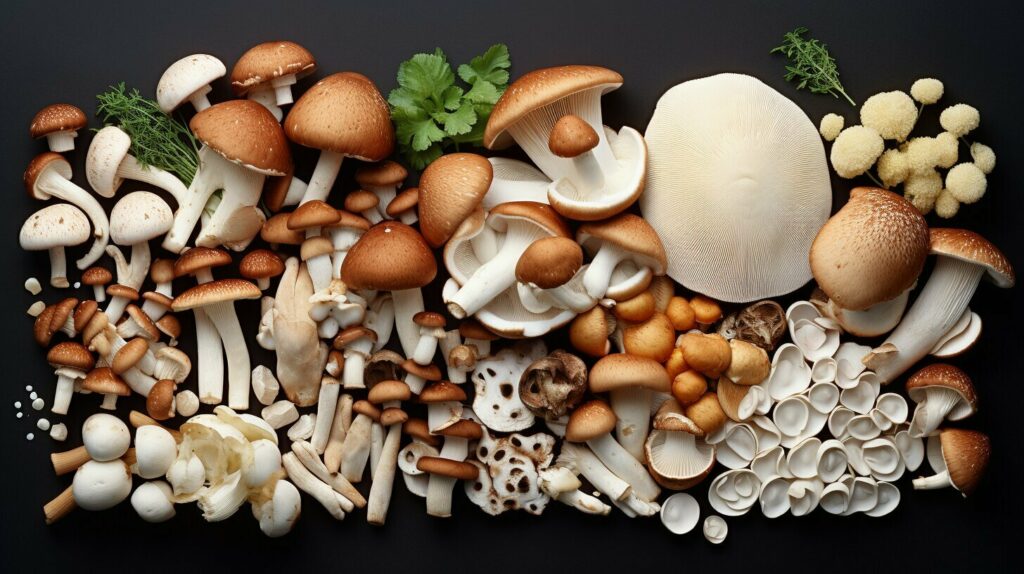
In conclusion, mushroom stems can indeed be eaten, but not all are palatable or safe for consumption. While some mushroom stems can be tough and woody, making them unappealing to eat, there are certain species with delicious and enjoyable stems such as king oysters, enoki mushrooms, cremini mushrooms, chanterelles, and morel mushrooms.
Mushroom stems also have culinary uses, as they can be used to flavor soups, broths, and stocks, adding depth and richness to various dishes. Additionally, it is important to note that mushroom stems contain the same nutritional benefits as the caps, making them a valuable addition to a healthy diet.
However, it is crucial to exercise caution when consuming mushrooms. Poisonous mushrooms exist, and it is essential to be able to identify and avoid them. When encountering poisonous mushrooms, it is recommended to remove and discard the stems to prevent any harmful effects. Furthermore, shiitake mushrooms should always be cooked before consumption, as they contain a toxic polysaccharide that can cause an allergic reaction if eaten raw.
In summary, while mushroom stems can be part of a delicious and nutritious culinary experience, it is necessary to ensure that they come from edible species and are prepared properly. With the right knowledge and precautions, mushroom stems can be enjoyed as a flavorful and healthy addition to various dishes.
FAQ
Q: Can you eat the stem of a mushroom?
A: Yes, you can eat the stems of certain edible mushrooms. However, not all mushroom stems are palatable. Some may be tough and woody, making them unappealing to eat.
Q: What types of mushrooms have edible stems?
A: Some mushrooms with edible stems include king oysters, enoki mushrooms, cremini mushrooms, chanterelles, and morel mushrooms. These mushrooms have delicious and enjoyable stems.
Q: What can you use mushroom stems for in cooking?
A: Mushroom stems can be used to flavor soups, broths, and stocks. They add depth and richness to various dishes and can enhance the overall taste.
Q: Do mushroom stems have nutritional benefits?
A: Yes, mushroom stems contain the same nutritional benefits as the caps. They are a valuable addition to a healthy diet, providing essential vitamins, minerals, and antioxidants.
Q: Are all mushroom stems edible?
A: No, not all mushroom stems are suitable for consumption. Some stems may be tough and woody, making them unpleasant to eat. It is important to identify and avoid inedible mushroom stems.
Q: What should I do with the stems of poisonous mushrooms?
A: If you come across poisonous mushrooms, it is crucial to remove and discard the stems. Consuming the stems of poisonous mushrooms can have harmful effects on your health.
Q: Do I need to cook shiitake mushrooms before eating them?
A: Yes, it is recommended to cook shiitake mushrooms before consuming them. Raw shiitake mushrooms contain a toxic polysaccharide that can cause an allergic reaction if eaten raw.
Q: What else should I consider when consuming mushrooms?
A: Other considerations for mushroom consumption include proper storage, cooking techniques, and potential allergic reactions. It’s important to properly store mushrooms, cook them thoroughly, and be aware of any personal allergies.

